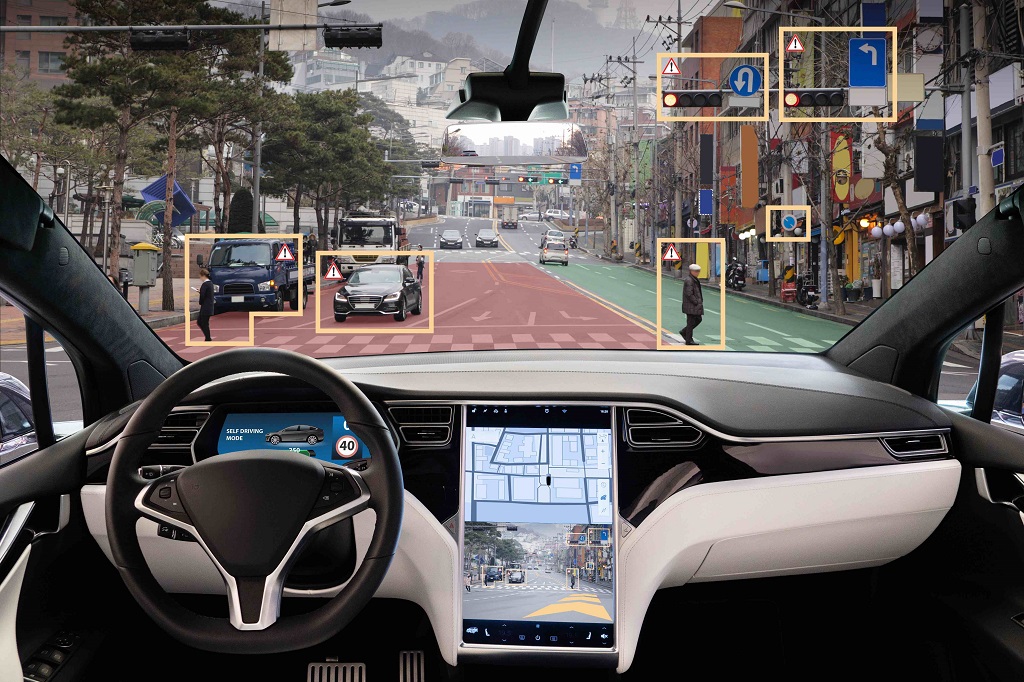The concept of self-driving cars has captured our imaginations for decades. From futuristic movies to tech giant promises, autonomous vehicles (AVs) represent a potential revolution in transportation. But how close are we to truly driverless cars, and what levels of automation can we expect?
This article explores the five levels of autonomous driving, as defined by the Society of Automotive Engineers (SAE International). This globally recognized standard provides a clear framework for understanding the capabilities and limitations of current and future AV technologies.
Before We Begin: Understanding Automation
The levels of autonomous driving represent a spectrum of automation, ranging from systems that require constant driver supervision to fully driverless vehicles that can navigate any situation independently. It’s important to remember that these are levels of automation, not a guarantee of perfect performance. Even the most advanced systems might have limitations in certain scenarios.
Level 0: No Driving Automation
This is the baseline – conventional cars with no self-driving capabilities. The driver is solely responsible for all aspects of operating the vehicle, including steering, acceleration, and braking. Modern vehicles might have some advanced driver-assistance features (ADAS) like lane departure warning or automatic emergency braking, but these systems still require constant driver supervision and intervention when necessary.
Level 1: Driver Assistance
Level 1 represents the introduction of basic driver-assistance features. These systems can provide some level of automation, but the driver remains fully responsible for operating the vehicle. Here are some common Level 1 ADAS features:
- Adaptive Cruise Control (ACC): Maintains a set distance from the car in front.
- Lane Departure Warning (LDW): Alerts the driver if the car unintentionally drifts out of its lane.
- Automatic Emergency Braking (AEB): Applies brakes automatically to avoid a collision at low speeds.
While Level 1 features can make driving more comfortable and potentially safer, they don’t automate any core driving functions. The driver must stay engaged and ready to take over control at any moment.
Level 2: Partial Driving Automation
Level 2 introduces more sophisticated driver-assistance features that can handle some aspects of driving under specific conditions. However, the driver must still be attentive, hands on the wheel, and prepared to take back control when the system reaches its limitations or the driving situation requires it. Examples of Level 2 features include:
- Combined Highway Assist Systems: These systems can integrate functions like ACC and Lane Keeping Assist (LKA) to manage steering, acceleration, and braking on highways under certain conditions.
- Traffic Jam Assist: This system can help manage stop-and-go traffic by controlling speed and maintaining lane position at low speeds.
While Level 2 offers a more automated driving experience, it’s crucial to understand that these systems are not foolproof. Drivers must remain vigilant and never rely solely on the technology.
Level 3: Conditional Driving Automation
Level 3 represents a significant leap towards autonomous driving. These systems can manage all aspects of driving in specific conditions, such as on highways with clear lane markings and good weather. The driver can, under certain circumstances, take their eyes off the road and hands off the wheel, but they must be prepared to resume control when prompted by the system or when the driving environment exceeds the system’s capabilities.
Level 3 technology is still under development, and regulations regarding its use vary by region. It’s important to note that even in Level 3 scenarios, the driver remains legally responsible for the vehicle’s operation.
Level 4: High Driving Automation
Level 4 represents a highly autonomous vehicle that can handle all aspects of driving in specific designated areas, such as geofenced highways or well-mapped urban environments. In these areas, the driver need not be attentive and can fully disengage from the driving task.
However, Level 4 vehicles might require human intervention if they encounter situations outside their designated operating areas or if the system malfunctions. These vehicles might also need to pull over safely and transfer control to the driver if necessary.
Level 5: Full Driving Automation
Level 5 represents the pinnacle of autonomous driving – a truly driverless car. These vehicles can navigate any road or environment without human input. They can perceive their surroundings, make decisions, and operate the vehicle safely and legally under all conditions.
Level 5 technology is still theoretical, and significant hurdles remain in terms of sensor technology, artificial intelligence, and robust safety measures. However, continued advancements in these areas keep the dream of fully self-driving cars alive.
The Road Ahead: A Future Shaped by Automation
The development of autonomous driving technology is a complex and ongoing process. The five levels outlined by SAE International provide a valuable framework for understanding the current state and future possibilities of autonomous vehicles. Here are some key takeaways to consider:
-
Gradual Evolution: The transition to fully autonomous vehicles will likely be gradual, with advancements happening incrementally through the different levels.
-
Focus on Safety: Safety remains paramount. Robust testing, clear regulations, and responsible development are crucial to ensure the safe integration of AVs into our transportation landscape.
-
Impact on Transportation: Autonomous vehicles have the potential to revolutionize transportation, making it potentially safer, more accessible, and more efficient. However, the impact on infrastructure, jobs, and regulations needs careful consideration.
-
Ethical Considerations: As AVs become more sophisticated, ethical questions regarding decision-making in critical situations will need to be addressed.
Looking Beyond the Levels
While the SAE levels provide a helpful framework, it’s important to remember that they are not a rigid classification system. There may be variations and overlaps within each level, and different manufacturers might implement autonomous driving features in unique ways.
Staying Informed
The development of autonomous driving technology is a rapidly evolving field. Staying informed through reputable sources will help you navigate the hype and understand the realistic timeline for the widespread adoption of AVs.
Related: What Are the Safety Precautions When Repairing a Car?
The Future is in Motion
The concept of self-driving cars is no longer science fiction. The five levels of autonomous driving offer a roadmap for the future of transportation. While challenges remain, the ongoing advancements in technology bring us closer to a world where autonomous vehicles share our roads, potentially transforming the way we travel and interact with our surroundings.






